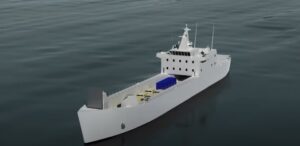
Several Navy officials recently confirmed the Navy and Marine Corps compromised on designs for the new Landing Ship Medium (LSM) and laid out the upcoming schedule, but also said it will be a warship that goes into contested environments. The Navy and Marine Corps earlier disagreed on the requirements for the LSM, previously called the Light Amphibious Warship (LAW), with the Navy preferring fewer ships that were larger and more expensive while the Marine Corps sought a larger number of…

 By
By 











